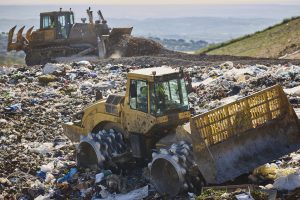It’s that time of year again. Drinks have been drunk, gifts exchanged, and resolutions dot our 2024 calendars. Any notions of creating a positive social impact has been put on hiatus.
Now, the buzz is wearing off and we’re trying to shake off the realization of how we’ve overdone it again. And we’re left wondering what to do with the unnecessary items that add to the clutter.
With shopping becoming a dominant form of entertainment, here are some sobering facts:
- 92 million tonnes of garments end up in landfills every year.
- Over 60 percent of fibres are synthetic, derived from fossil fuels.
- Over 30 million women and children are engaged in the industrial waste sector.
Does this seem trend seem at all sustainable? The short answer is – no.
For more exclusive insights on cellular IoT connectivity, sign up for our monthly newsletter today!

Sustainability – Out of sight, out of mind
When it comes to trends in fashion, electronics, and more, a huge chunk of the purchasing process is opaque. Not only to you, but to most organizations up and downstream as well.
We simply don’t see the working conditions of those that produce it. Those who are closest to the source. How much (or little) they’re paid, what their living conditions are, and so on.
This is something that we at ZARIOT are actively trying to change.
For example, did you know that coffee farmers average 12-hour days. They harvest between 20-40 kilograms of cherries for 9-18 kilograms of beans. Despite this, they often receive less than USD$2 per kilogram of beans harvested.
What if every time we grabbed a coffee, it came with just a few more of these insights? For example, our key partner, SmartAxiom, is trying to do just that with their waste reduction and recycling activities in the coffee and battery industries.
After all, we barely bat an eye when it comes to handing over our personal data, images, and decisions to social media companies or online retailers.
Why don’t we ask that they share more of their data with us to ensure they attempt to balance their bottom line with the green line?

Smarter data makes for smarter choices
We commonly associate Internet of Things (IoT) technology as “efficient”, “easy” and “insightful” to organizations.
The crux of IoT is to enable better decision making for everyone through actionable data.
In 2020 alone, we generated 64.2 zettabytes of data that is projected to grow to more than 180 zettabytes in 2025. 1 zettabyte is the equivalent of a trillion gigabytes of data!
IoT and data generated gives unprecedented visibility and precision across the value chain. It brings sustainability to the forefront, makes processes easier, and planning more efficient, reducing overall costs for a superior customer experience.
However, the IoT ecosystem that we’re building with our partners is also used to promote “sustainability” and “accountability” to empower choices that the everyman makes.
The solution is simple – More visibility = more insights = better choices. After all, we choose what to purchase, and who to purchase it from.

Lower barriers of adoption
This is especially since IoT initiatives are no longer limited to those at the top of the pile, or those with exclusive technical knowledge.
In fact, the costs of implementing an IoT project has fallen significantly over the past years, making it highly accessible to organizations across the value chain.
Prices for IoT sensors have fallen significantly, costing as little as USD$0.38 per device. This trend also extends to connectivity, network, integration, device management, and all points of the IoT value chain.
Service providers can now offer highly customizable solutions and easy device management, while making integration and use as seamless as possible.
Not only can first time IoT adopters go to market quicker, but looking ahead, they’ll be able to take a proof-of-concept to mass global deployment effortlessly.
Parting thoughts
With more organizations implementing IoT initiatives, transparency, sustainability, and accountability can start at the source through the entire value chain.
By being more intentional with our purchases, workers downstream stand to benefit from higher wages and regular working hours. Allowing them to significantly improve their quality of life and those around them.
Similarly, global efforts to reach net-zero emissions may sound ambitious, but again, IoT solutions have made distribution channels more fuel efficient.
In fact, integrating IoT as part of a consolidated ESG commitment from the very first step will reduce greenhouse gas emissions by 15% across all industrial sectors by 2030.
Take that first step with us today.











